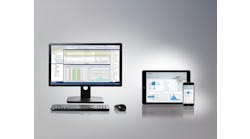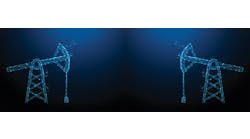Many of us clean up nicely. It's a polite way to say we're unrecognizable until we shower, shave and comb what's left of our hair. The same transformation is usually needed for information before it can be analyzed—not to mention the preparation most endeavors require for success. We may be looking right at what we want to see, but if it's obscured or blurry, we might as well be blind in the dark—until some effort brings it into focus.
For instance, anyone who's painted a room or a house knows most of the labor goes into scraping, spackling and taping before any paint is applied. Because the Boy Scouts' "Be prepared" mantra echoes in this and most situations, many engineers and managers seek data they can trust, but it usually has to be cleaned, contextualized, formatted, resolved or otherwise aligned, so their subsequent analytics can produce better decisions and more productive and profitable operations.
Wash up wherever
The good news is that data cleaning and preparation can apparently be performed almost anywhere. For example, to improve the performance of its oil and gas wells in the Permian Basin, Apache Corp. in Houston recently leveraged its real-time data sources, and implemented remote access control for better, faster decision-making and more-informed production adjustments. It also implemented FactoryStudio software from Tatsoft powered by its FrameworX agnostic, non-instrusive IoT engine to aggregate, process, analyze and visualize real-time data. The platform’s open standards and native interfaces with existing SCADA systems and historians let Apache implement a rig-centric approach that easily accesses, streams and interprets real-time production data from about 800 wells. This real-time data feeds initial analytics, populates dashboards, fuels lessons-learned analyses, and provides results to virtual, as-needed, real-time control centers.
"Data collection, preparation and analytics can be done where needed, whether it's on the edge, in the cloud, or in between. If you're doing vibration analysis or face recognition with cameras, they produce a lot of real-time data, so you'll want to do initial data processing at the device," says Marc Taccolini, founder and CEO of Tatsoft. "Many applications run on or near production equipment, send results to the cloud for analysis, and execute instructions in the field. We work as an IIoT hub for many applications that can run analytics in the cloud. Microsoft Azure, Amazon Web Services (AWS), Oracle and others all have analytics programs, but users can also look for open-source software with streaming connections for continuous data flows, videos or analog data flows, such as Apache Kafka distributed streaming platform and pipeline for real-time analytics."
Intelligence aids interoperability
Apache reports that using FactoryStudio and FrameworX gives its wells, rigs and other operations greater interoperability by letting them add intelligence and plug-and-play connections, which are edge-to-cloud scalable. Its rig-based application operates algorithms in real-time to determine well states, data quality and trustworthiness; runs hydraulic models, MSE calculations and vibration analysis; and performs time-to-depth transformations (Figure 1). FrameworX also lets Apache's operators:
-
Capture unstructured data and automate calculations for improved decision-making to increase productivity and efficiency;
-
Optimize drilling with real-time streaming data and artificial intelligence (AI);
-
Connect to real-time devices with multiple protocol drivers;
-
Locally store and model the real-time information;
-
Transform the data at the rigs with analytics based on Python software;
-
Visualize and make decisions based on AI-driven events; and
-
Push key parameters and calculated data to centralize software from OSIsoft.
"The key concept is to establish a real-time data stream for particular applications, which require open data connections for specific analytics," adds Taccolini. "Our software enables real-time analytics. We give users a framework for processing their analytics and visualizing the results. FrameworX includes data modeling, protocols and communication tools, which guide them so operations doesn't have to be as much of a nightmare."
Apache adds its data analytics program also saved 75-80% in direct costs per average well by using FactoryStudio compared to existing, land-based EDR systems; saved 93-95% compared cost of other solutions with real-time models and logging visualization at the rig; and provided up to 100 Hz received data rates for Apache's project.






